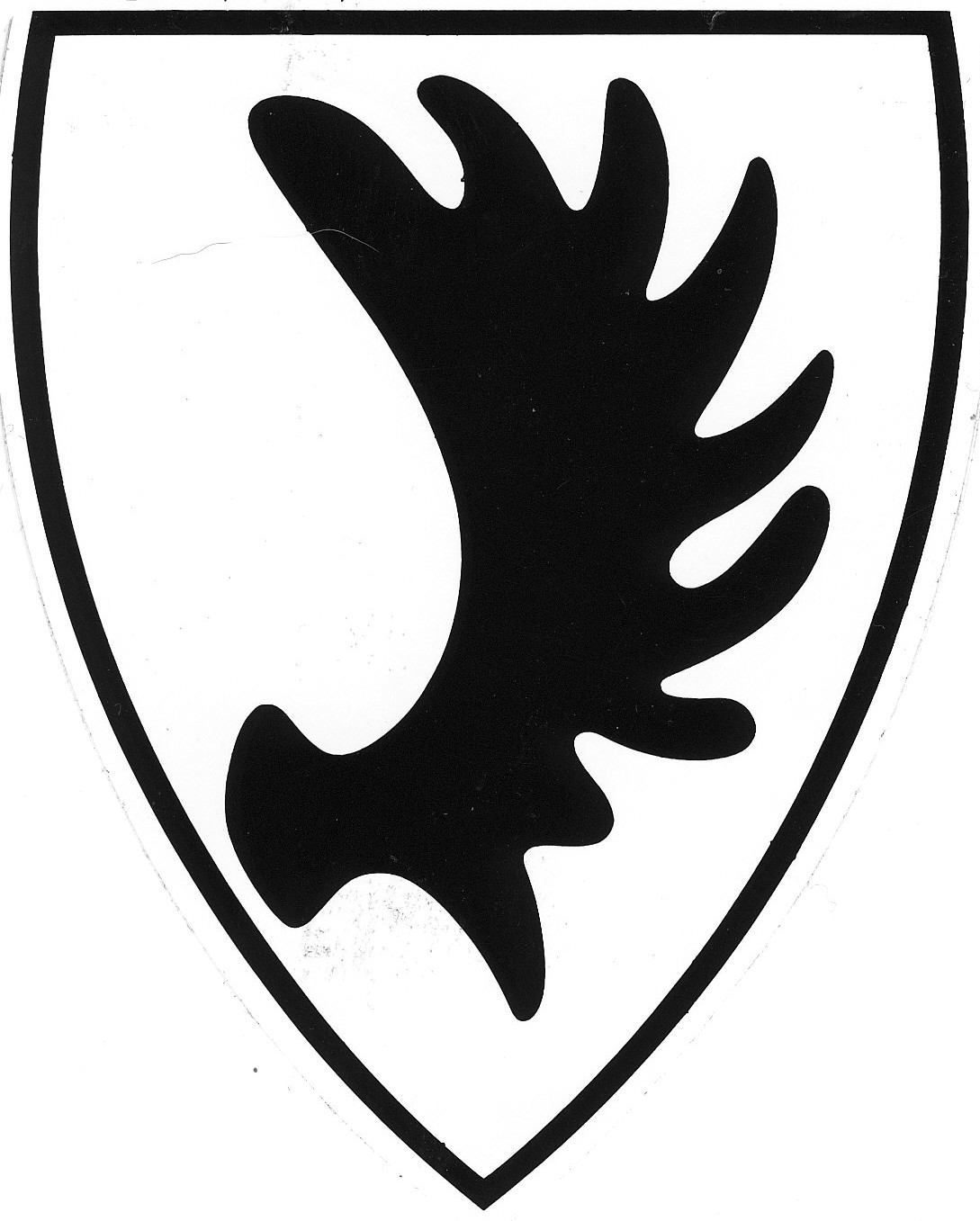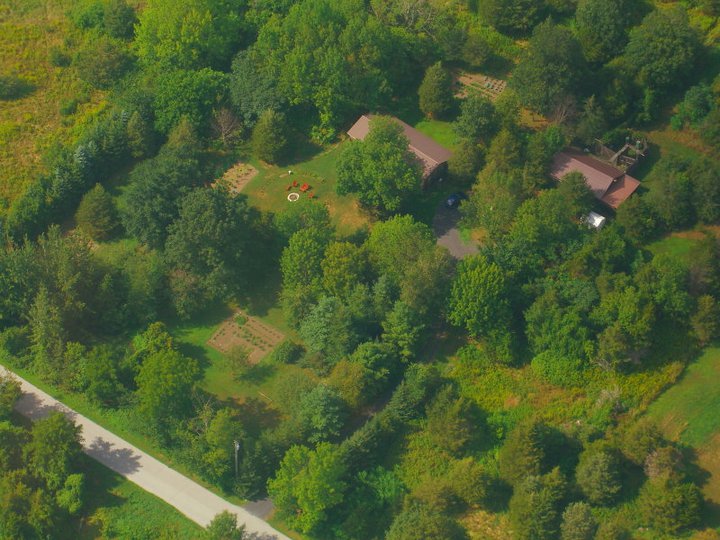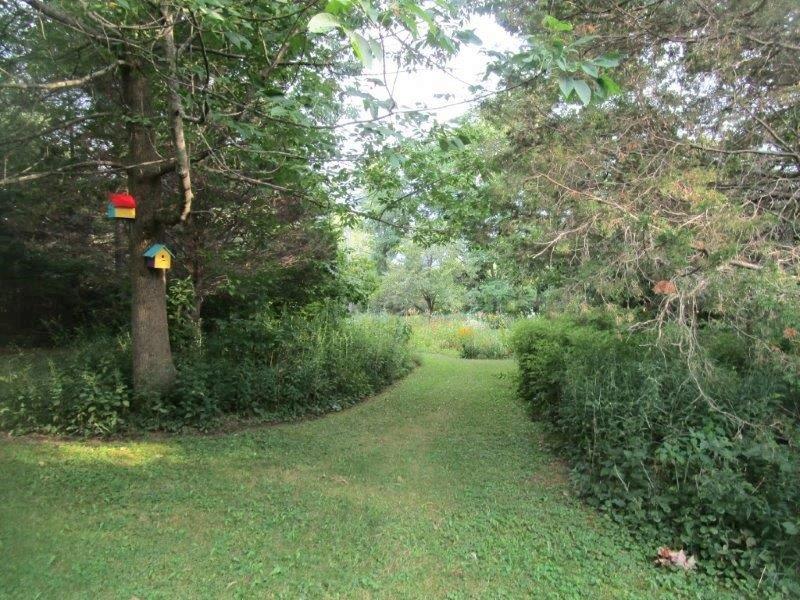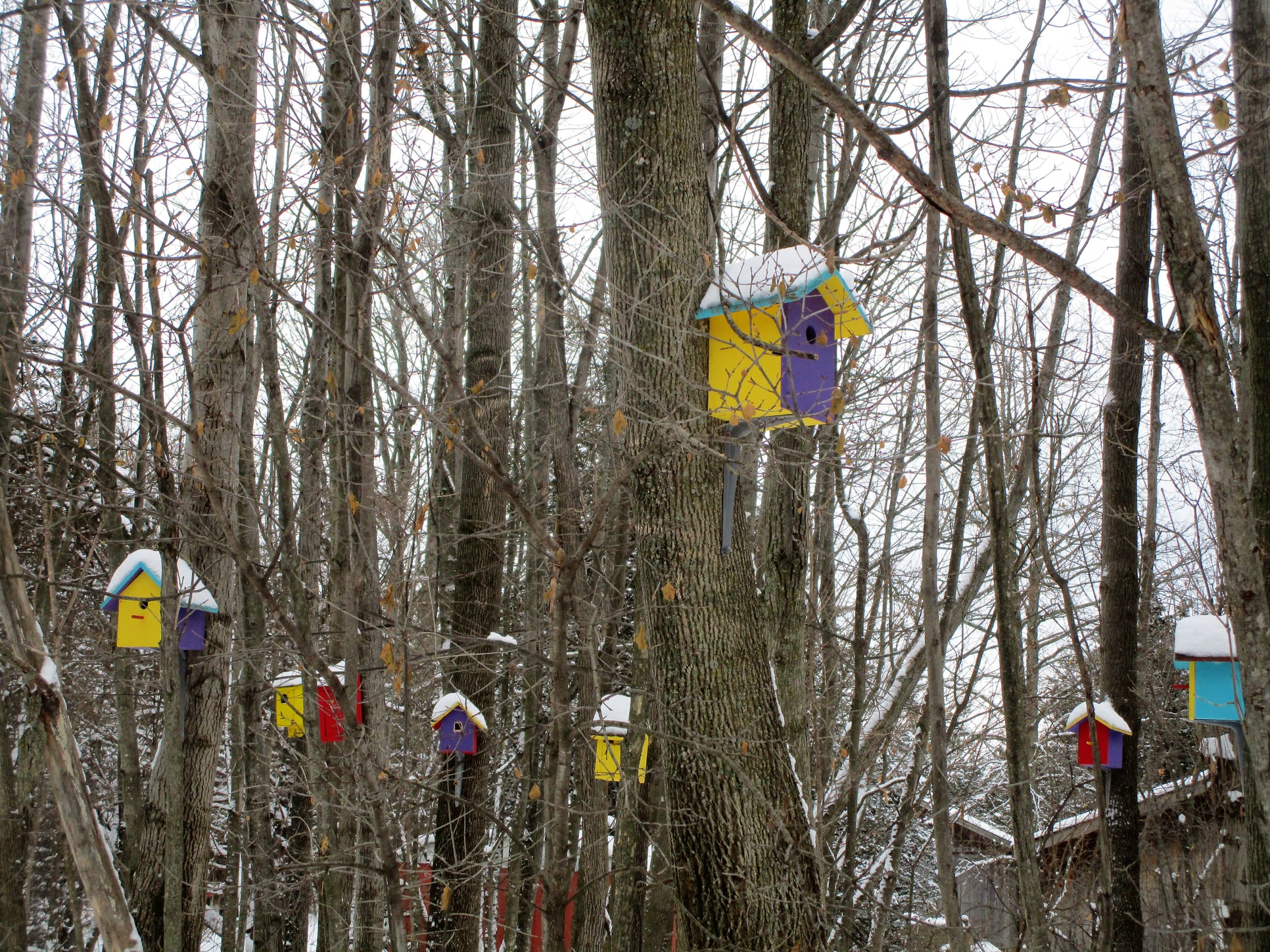|
A Long-Term Transition
When we first saw the Old Elk Farm property, it was surrounded by a wall of evergreens but had a large empty lawn that was plain and uninteresting. We built a fire pit in the center of the yard and installed four food gardens in each of the next sunniest spots. We staggered our mowing and allowed portions of the lawn to meadow which attracted wildlife. It has become a place to enjoy watching birds and observing pollinators up close.
|
Letting nature do its thing
We allowed rewilding around the property boundary and under large tree groupings to form smaller garden spaces which connect by pathways. The borders of those rewilded areas contain Yarrow, Chicory, Aster, Daylily, Burdock, Thistle, Creeping Charlie, Clover, Dandelion, Lilac, Milkweed, Mint, Purple Coneflower, Raspberry, Oregano, Tulip, Daisy, Goldenrod, Joe Pye Weed, Rudbeckia, Violets, and native grasses.
|
|
|
Bees, Bats, Birds, and Butterflies
As we grew into beekeeping, the food gardens became flower gardens to provide our honey bees and other pollinators a continual source of nectar and pollen throughout the season. We found the wider a variety of perennial and annual flowers they are provided to feed from, the more flavorful and delicious the honey becomes.
We have installed several shelters for birds, butterflies, bats, and native bees to attract a wide variety of pollinators.
|
Today, we have nine gardens of various sizes. Click here to learn what we are growing this season.
Asparagus Patch
This is a hidden narrow rectangular strip along the east side of the driveway bookended by orange Daylilies, and near a patch of yellow Sundrops. At the center of the Asparagus patch is purple Aster. This garden space features seating to enjoy the lake and mountain view, and also has a container of pink Begonia, pink Impatiens, and red/yellow Marigold.
Circular Garden
This large circular garden is the centerpiece of the lower yard where we grow Grape, Apple, and Pear. It features an inner walking path, birdbath, and metal structure for climbing plants. The outer circle of purple Iris is the first to bloom, then an inner circle of orange Daylilies, and finally a central spot of fuchsia Bee Balm in front of purple Morning Glory, and accented by Rudbeckia.
Front Corner Garden
This medium-sized three-sided garden is at the southwest corner of the property next to a fossil rock outcrop and a pair of Apple trees. First to bloom are Violets, then orange Daylilies and purple Coneflower, and finally fuchsia Bee Balm.
Tear Drop Garden
This small teardrop-shaped accent garden near the Food Garden features a bird feeder and a honeybee swarm trap, and plantings include Hosta, fuchsia Bee Balm, shade-tolerant wildflowers, and native grasses.
Butterfly Garden
This narrow arc-shaped garden in the front yard is accented by butterfly shelters and is where we grow Zinnia and Milkweed to attract migrating Monarch butterflies. We meadow this area for the bees when Dandelion or Clover are in bloom.
Food Garden
This medium-size circular garden is a focal point of the side yard and is where we grow some of our own food. This season we are growing Watermelon, Summer Squash, Spaghetti Squash, Zucchini, Cucumber, Pepper, Sugar Snap Pea, Radish, Bean, Tomato, and Basil.
Herb Garden
This narrow arc-shaped garden in the front yard contains the herbs we grow. Spring Tulips make way for Mint, Onion, Oregano, Parsley, Chive, Sage, Dill, Rosemary, Lavender, and Thyme. Nearby seating allows up close observation of the various bees in the garden.
Front Yard Garden
This large oval-shaped garden in the heart of the front yard contains Crocus, Violets, Daylily, Yarrow, Bee Balm, Milkweed, Mint, and native grasses. Adjacent elevated planters grow a variety of salad greens. The area also features several containers of red and fuchsia Geranium, red Begonia, purple Petunia, pink Impatiens, and red & yellow Marigold.
Back Yard Garden
This large garden space is a combination of a medium-size kidney-bean shaped garden, a medium-size circular planting area, and the adjacent area we meadow for our bees when Clover is flowering. Early blooms include purple Iris and orange Daylily, with Hollyhocks, Calendula, Cosmos, and Gladiolas to follow. A purple Lilac and a tire stack of Potatoes accent the adjacent bed of wildflowers.
|
|
|



